The creature will be on display in Tokyo until September
Scientists think she got stuck in a swamp and died over 39,000 years ago
Blood sample found at the scene could be used to clone the beast
A female woolly mammoth, which was found frozen in Russia in May, has gone on display in an exhibition hall in Tokyo.
The 39,000-year-old mammoth will be on display at the hall in Yokohama in the south of the Japanese city from 13 July until September 16.
Visitors and tourists will be able to come and view the extinct creature that was discovered in an ice tomb in the New Siberian Islands, or Novosibirsk Islands, earlier this year.
Scroll down for video
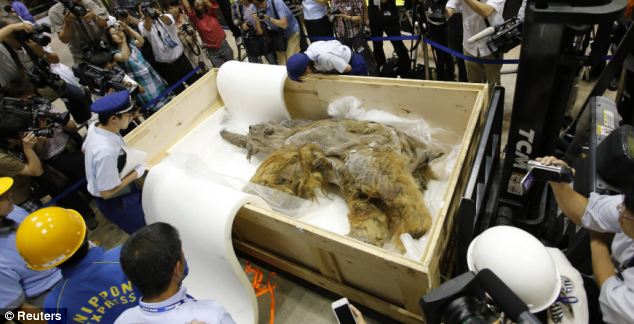
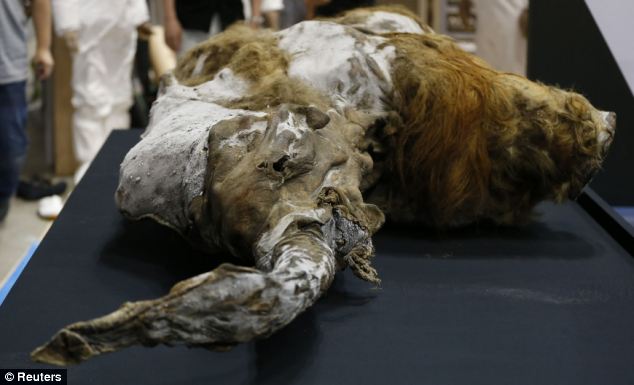
Parts of the carcass are especially well preserved because they remained entirely frozen for thousands of years.
This means that the shape of the mammoth is intact, including its hair - which gave the mammoth its woolly name.
However, the upper torso and two legs, which were found in the soil rather than the ice, were gnawed by prehistoric and modern predators and almost did not survive.
Visitors to the hall will also be able to clearly see the mammoth's snout, legs and torso.
The scientists who found the mammoth in May were also able to extract a blood sample from the beast.
It was the first ever well-preserved sample of blood from a woolly mammoth and could be used to recreate the extinct species.
The blood was sealed inside ice beneath the carcass of a female mammoth.
Preserved muscle tissue was also found from the creature, aged between 50 and 60 when she died, according to the Russian team who made the discovery on islands off the northern coast of Siberia.
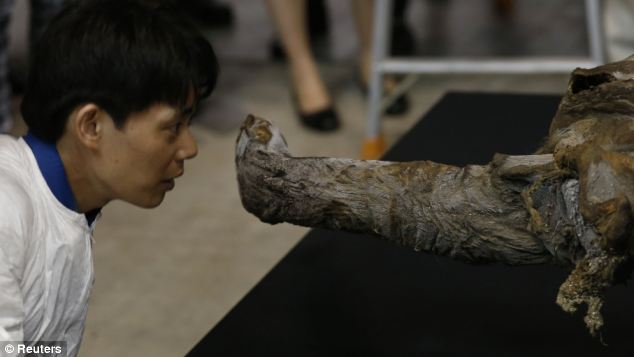
Semyon Grigoriev, head of the Museum of Mammoths of the Institute of Applied Ecology of the North at the North Eastern Federal University told The Siberian Times: 'We were really surprised to find mammoth blood and muscle tissue.'
He hailed it as 'the best preserved mammoth in the history of paleontology'.
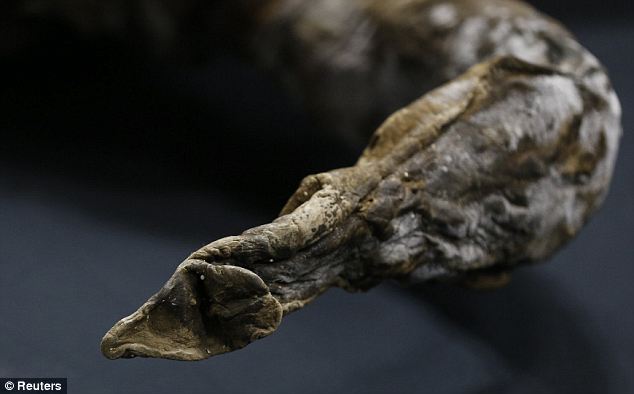
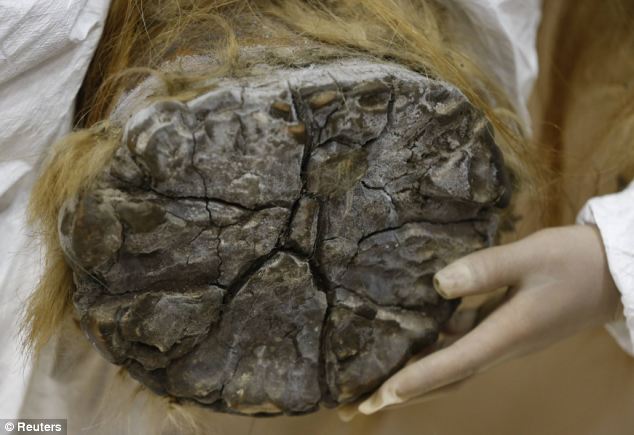
Dr Grigoriev put the approximate age of the animal at around 10,000 years old but more recent dating tests suggest the creature is much older - daring back around 39,000 years.
'It has been preserved thanks to the special conditions, due to the fact that it did not defrost and then freeze again.
'We suppose that the mammoth fell into water or got bogged down in a swamp,' could not free herself and died.
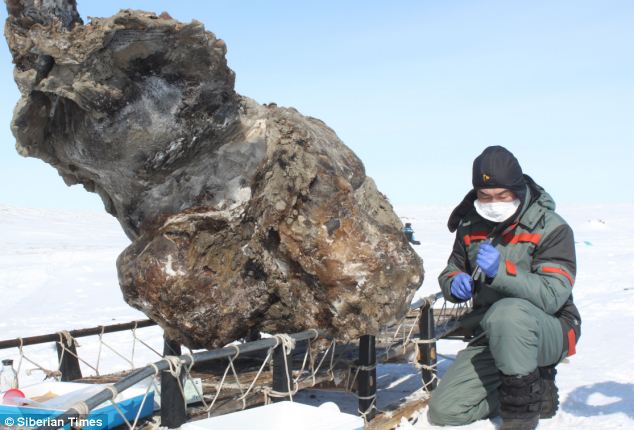
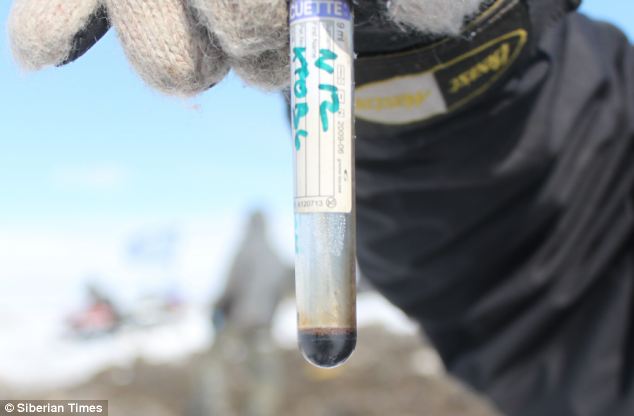
The hope is that at least one living cell of the mammoth was preserved 'although even with such well-preserved remains, this may not be the case.'
'It is great luck that the blood preserved and we plan to study it carefully," Dr Grigoriev continued.
'For now our suspicion is that mammoth blood contains a kind of natural anti-freeze.'
Samples taken from the mammoth include 'blood, blood vessels, glands, soft tissue, in a word - everything that we could.
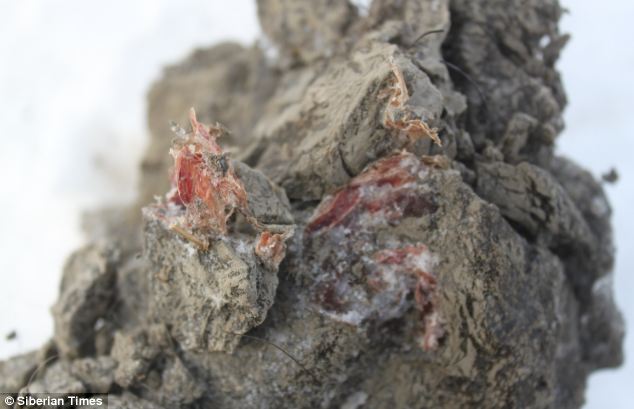
The samples were taken for study to Yakutsk, capital of the Republic of Sakha, also known as Yakutia, the largest region in the Russian Federation.
The carcass weighing around one tonne was then moved to the Siberian mainland and was kept in ice storage before being taken to Tokyo.
The blood and other samples were made available to South Korean scientist Hwang Woo-suk's private bioengineering laboratory, which has confirmed it is working with other mammoth DNA samples in a bid to return the extinct Siberian mammoth to the planet.
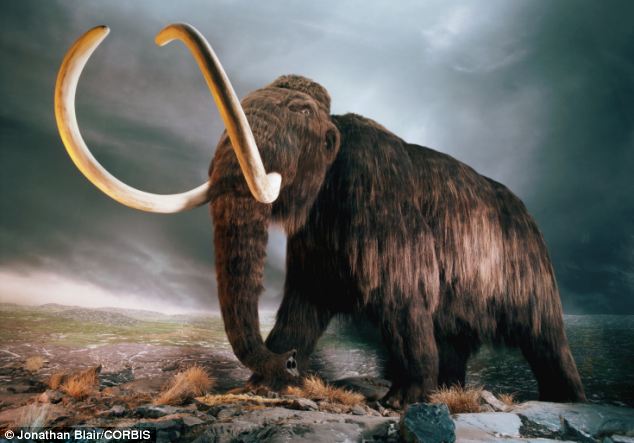
Earlier this year a group of scientists from around the world met for TEDx conference in Washington, sponsored by National Geographic.
The group were discussing the possibility of bringing 24 animals back from extinction, also known as 'de-extinction'.
The animals included the dodo bird, the Carolina Parakeet, last seen in 1904 in Florida, and the Quagga, a plains zebra which once lived in South Africa but died out in 1883.
However, a real life Jurassic Park is not an option, it is said, because dinosaur DNA is just too old.
In May, scientists from University of Cincinnati claimed that a giant meteor was probably responsible for wiping out the woolly mammoth, and not hunting, which researchers previously thought was the reason.
They believe a huge meteor smashing through the Earth's atmosphere broke up into ten million tonnes of fiery fragments, scattering over four continents.
These fragments are thought to have released toxic gas which poisoned the air and blacked out the sun, causing temperatures to plummet, plants to die and landscapes to alter forever.



Was only caused by SUV's! Or was that before we discovered we're heading into a mini-ice age?